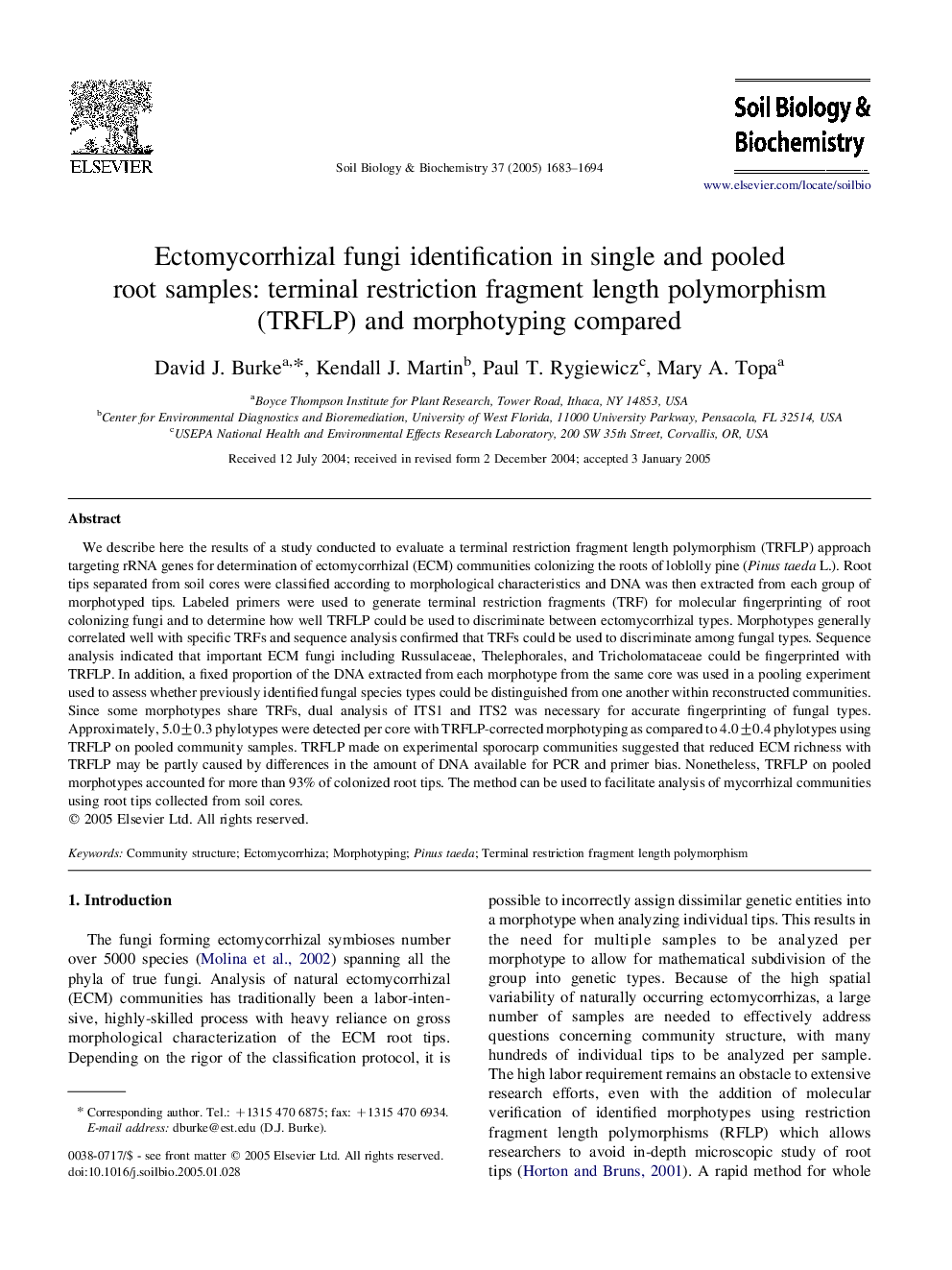| Article ID | Journal | Published Year | Pages | File Type |
|---|---|---|---|---|
| 10846176 | Soil Biology and Biochemistry | 2005 | 12 Pages |
Abstract
We describe here the results of a study conducted to evaluate a terminal restriction fragment length polymorphism (TRFLP) approach targeting rRNA genes for determination of ectomycorrhizal (ECM) communities colonizing the roots of loblolly pine (Pinus taeda L.). Root tips separated from soil cores were classified according to morphological characteristics and DNA was then extracted from each group of morphotyped tips. Labeled primers were used to generate terminal restriction fragments (TRF) for molecular fingerprinting of root colonizing fungi and to determine how well TRFLP could be used to discriminate between ectomycorrhizal types. Morphotypes generally correlated well with specific TRFs and sequence analysis confirmed that TRFs could be used to discriminate among fungal types. Sequence analysis indicated that important ECM fungi including Russulaceae, Thelephorales, and Tricholomataceae could be fingerprinted with TRFLP. In addition, a fixed proportion of the DNA extracted from each morphotype from the same core was used in a pooling experiment used to assess whether previously identified fungal species types could be distinguished from one another within reconstructed communities. Since some morphotypes share TRFs, dual analysis of ITS1 and ITS2 was necessary for accurate fingerprinting of fungal types. Approximately, 5.0±0.3 phylotypes were detected per core with TRFLP-corrected morphotyping as compared to 4.0±0.4 phylotypes using TRFLP on pooled community samples. TRFLP made on experimental sporocarp communities suggested that reduced ECM richness with TRFLP may be partly caused by differences in the amount of DNA available for PCR and primer bias. Nonetheless, TRFLP on pooled morphotypes accounted for more than 93% of colonized root tips. The method can be used to facilitate analysis of mycorrhizal communities using root tips collected from soil cores.
Keywords
Related Topics
Life Sciences
Agricultural and Biological Sciences
Soil Science
Authors
David J. Burke, Kendall J. Martin, Paul T. Rygiewicz, Mary A. Topa,
